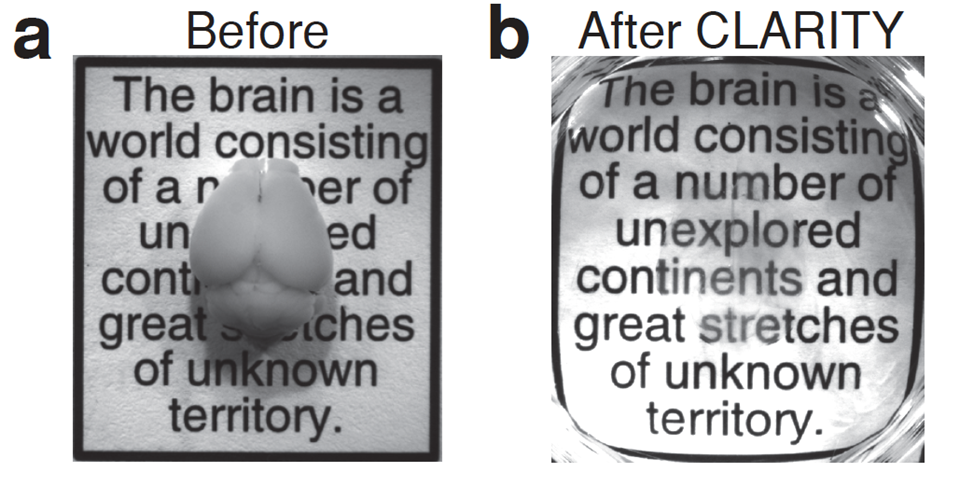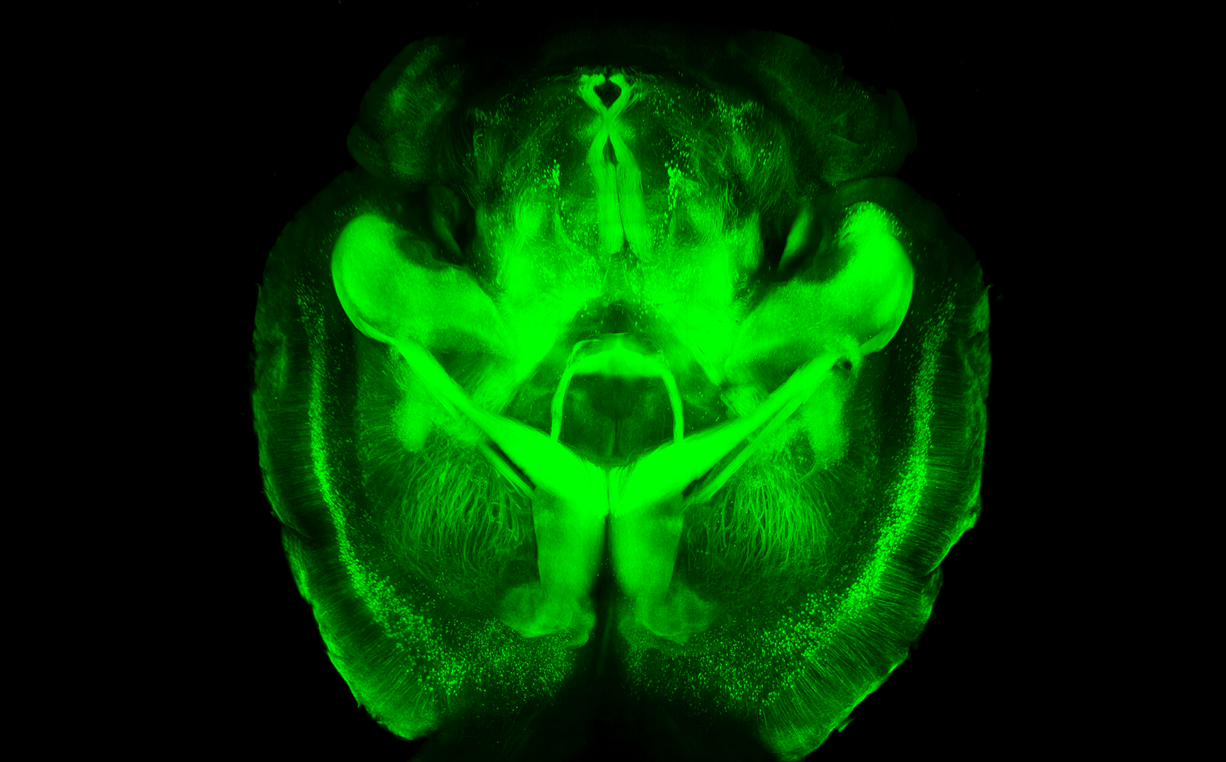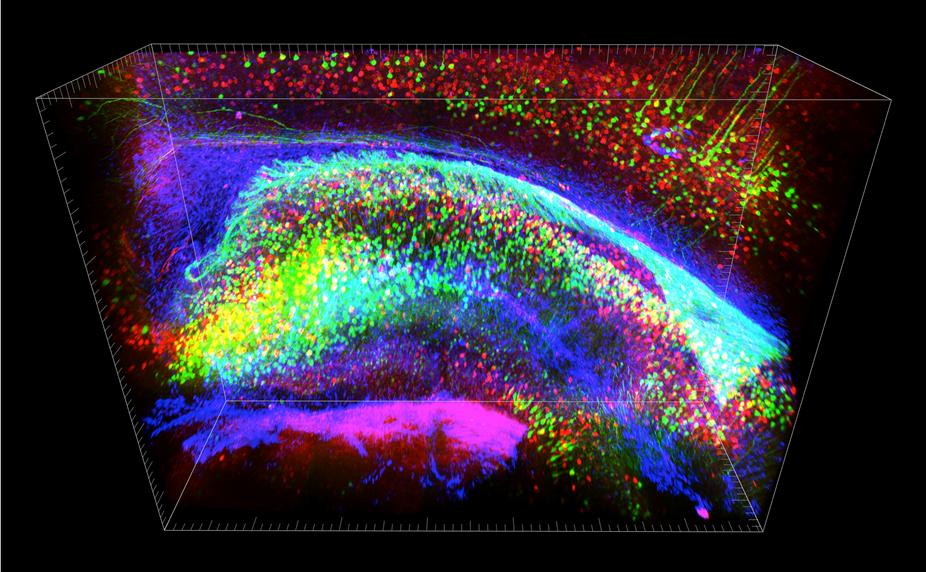To study the microscopic structures of the brain researchers have typically had to dissect the organ into amazingly thin slices that can then be viewed on a microscope. Without doing this, any structures more than a couple millimeters deep would be impossible to see. But besides being a pain-staking process, slicing the brain into thin slices can mess with the structure and make it difficult to follow the long paths of axons from one slice to the next.

Now, researchers at Stanford University have developed a chemical process to strip away the fats from a (dead) brain, leaving only transparent tissue that still retains its three-dimensional structure. The process, dubbed CLARITY, was developed in the lab of Karl Deisseroth, a psychiatrist and neuroscientist well known as one of the co-inventors of optogenetics (see “Light Switches for Neurons”). Deisseorth and colleagues describe the new method today in the journal Nature.
The CLARITY chemical treatment transforms brain tissue into a hydrogel-hybrid that includes the proteins, nucleic acids and small molcules of the organ but excludes the fats, which block both light and chemical dyes. Once the hydrogel-structure is formed, the fats can be dissolved away in an electric field.
The process leaves researchers with a transparent brain that can be studied directly. The study’s authors demonstrate the feat with the brain of a mouse that had been genetically engineered to carry a flourescent protein in its neurons:

Brains treated with CLARITY can also be stained with dyes that bind to proteins in neurons, providing researchers another way to examine the tissue:

And, perhaps most impressively, CLARITY-treated brains can be rinsed of any dyes and examined over and over again.
The technique could help researchers trying to map the intricate architecture of the brain’s cells and boost their understanding of the wiring-problems associated with some brain diseases (see “Connectomics”). Nature News reports that Deisseroth’s group is already working on making an entire human brain transparent (they reported on using the techqniue to examine small sections of a human brain in the paper).
“CLARITY has the potential to unmask fine details of brains from people with brain disorders without losing larger-scale circuit perspective,” said National Institutes of Health director Francis Collins, in a released statement.
If you want to take a fascinating tour through a mouse’s brain and learn more about the CLARITY process, watch the video below, produced by Nature:
Image Credits: Kwanghun Chung and Karl Deisseroth, Howard Hughes Medical Institute/Stanford University
Keep Reading
Most Popular
Large language models can do jaw-dropping things. But nobody knows exactly why.
And that's a problem. Figuring it out is one of the biggest scientific puzzles of our time and a crucial step towards controlling more powerful future models.
The problem with plug-in hybrids? Their drivers.
Plug-in hybrids are often sold as a transition to EVs, but new data from Europe shows we’re still underestimating the emissions they produce.
Google DeepMind’s new generative model makes Super Mario–like games from scratch
Genie learns how to control games by watching hours and hours of video. It could help train next-gen robots too.
How scientists traced a mysterious covid case back to six toilets
When wastewater surveillance turns into a hunt for a single infected individual, the ethics get tricky.
Stay connected
Get the latest updates from
MIT Technology Review
Discover special offers, top stories, upcoming events, and more.